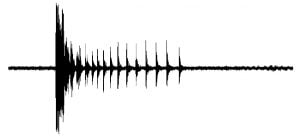The herring’s squeak or fart, from C17th Lübeck to 1980s Soviet submarine incursions into Swedish waters and a 2003 Ig Nobel Award
FARTING
Herrings can make a noise when they are lifted from the sea. This has been known for hundreds of years. In De Harengo (1654) Paul Neucrantz devotes a whole chapter to the subject, Concerning the squeaking of herrings whilst they do not breathe, arguing:
All fish have this so-called voice, coming either from their gills, which contain little bristles, or from the innards gathered around their stomachs – because air is held in these places and, when the fish are rubbed or shaken, sounds are squeezed out.
In The Herring; Its Effect on the History of Britain (1919), AM Samuel writes:
There is a belief among fishermen that a herring when caught articulates a sound similar to the word “cheese.” This sound is caused by an escape of air from the air bladder, or a movement of the gills. Fishermen, indeed, frequently state that the herrings “sneeze,” just as Aristotle says that gurnards “grunt.”
In 2003 the sneeze was confirmed as a high-pitched fart from the herring’s swim bladder, via its anus. It was suggested that the purpose of this little raspberry was likely to be rooted in nighttime communication within the shoal.
Ben Wilson and Lawrence Dill of the Simon Fraser University in British Columbia and Robert Batty of the Scottish Association for Marine Science collaborated on the Royal Society paper Pacific and Atlantic herring produce burst pulse sounds. They decided to call the sounds Fast Repetitive Ticks (FRT) or farts.
Their labours earned their research an Ig Nobel prize.
Soviet Submarines…
Meanwhile, related research had been going on in Scandinavia. In 1981, the Soviet Whiskey Class submarine S-363 had become stuck on rocks, 10 or so kilometres from the Swedish naval base of Karlskrona (on the South West corner of the country). It was known as the Whiskey on the Rocks Incident.
The Swedish military took the threat very seriously and began a programme of hydrophone recordings. Throughout the 80s and early 90s, the recordings revealed regular intrusions into Swedish waters of what seemed like submarine activity. In the mid 90s one of the highly suspicious sounds, a bit like the noise of a propeller, was revealed to be swimming mink, but there were other sets of recordings.
In 1996, possibly concerned as to why Soviet submarines were still so active when the Soviet Union itself had collapsed, the military called in biologists Hakan Westerberg (Sweden’s National Board of Fisheries) and Magnus Wahlberg (University of Aarhus).
The other sound turned out to be herring shoals communicating – squeezing air from the swim bladder through the anus. Or farting to each other. The research was made public in the early 2000s. There’s a link below to Magnus Wahlberg’s amusing short talk on the subject at the Göteborg Tedx event in 2012.
The Farts
Studying wild-caught herring in tanks and labelling the farts Fast Repetitive Tick (FRT) sounds, Wilson, Dill and Batty identified pulses of 1.7 to 22 kHz lasting between 0.6 and 7.6 seconds.
Denied access for more than a night to the water surface, where air could be gulped, the farts diminish as the herrings’ swim bladders deflate.

A herring’s fart in waveform
Herrings can detect much higher frequency sounds than most fish and can fart away without bothering or alerting other fish, but they don’t seem to use the talent for alarm calls – introduced shark smells had no effect.
Most of the farts occurred at night leading the researchers to suggest that they are contact calls when the herrings can’t see each other so well and the shoals become more scattered.
Although sharks and other fishy predators don’t hear the little farts, unfortunately seals, walruses, dolphins and killer whales do, which can be problematic.
Submarines are another matter.
